Canadian Preparatory Activities
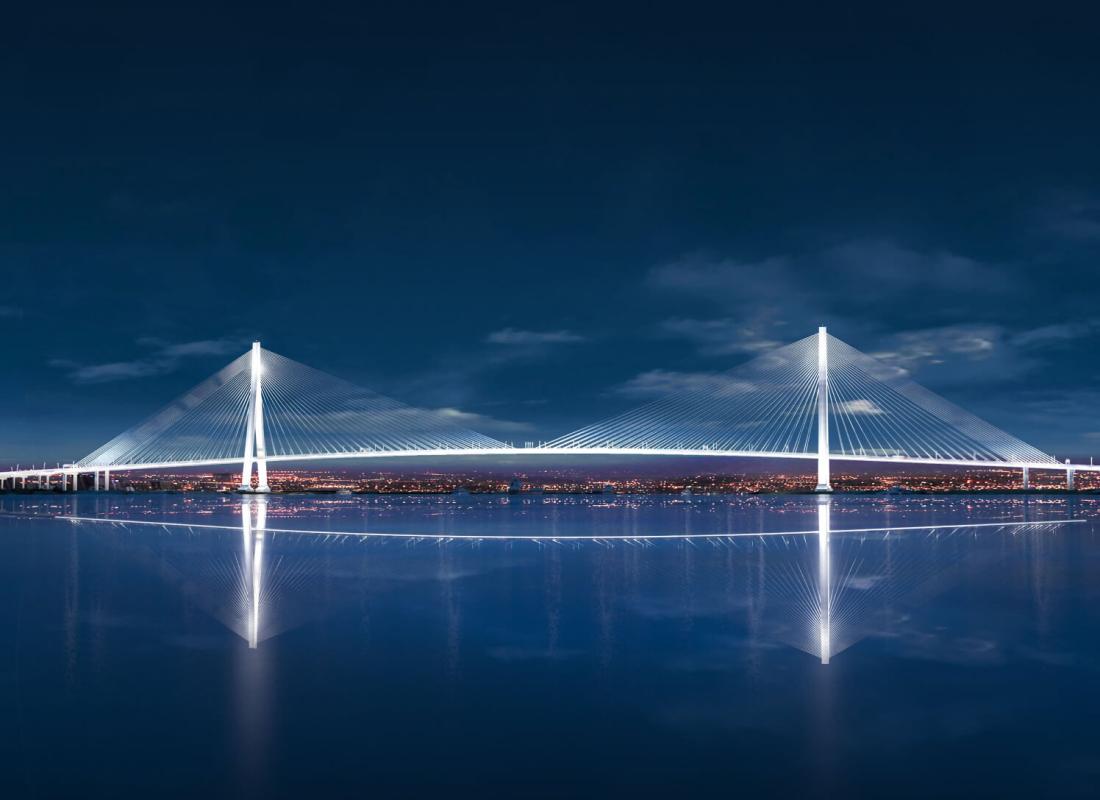
-
- Who We Are
- Mandate, Mission and Governing Legislation
- Access to Information and Privacy (ATIP) Requests
- Info Source
- Corporate Reports
- Annual Public Meetings
- Current Year (Transparency)
- Archives (Transparency)
- Governance
- Diversity, Equity, Inclusion and Accessibility
- Environmental, Social and Governance
- Contact Us
- Become an email subscriber
Work at the site of the Canadian Port of Entry (POE) is proceeding in a two-phase approach, with completion expected in late 2019. Phase One construction began in October 2015. The second phase began on January 2017.
Phase One construction consists of the construction of a perimeter access road, placement of fill, grading and drainage and minor utility relocation at the Canadian POE.
Phase Two focuses primarily on the relocation of Hydro One infrastructure at the Canadian POE, which is a complex network of high-voltage electrical distribution and transmission lines that will be relocated both underground and to new overhead locations.
Phase One - Early Works
On September 25, 2015, Windsor-Detroit Bridge Authority (WDBA) selected Amico Infrastructures Inc. of Oldcastle, Ontario as its contractor to complete the first phase of preparatory activities, known as Early Works, on the site of the Canadian Port of Entry (POE).
The Early Works activities will prepare the Canadian POE site for the work to be undertaken by the private-sector partner to be identified through the public-private partnership (P3) procurement process.
Included in this project is:
- construction of a perimeter access road (PAR)
- the placement of fill, grading and drainage
- utility relocation.
Perimeter Access Road (PAR)
Once construction of a new four kilometre, two-lane PAR is complete, existing sections of Sandwich Street and Broadway Street located within the footprint of the Canadian POE will need to be closed. The new PAR will be built around the site of the Canadian POE. The road will provide public access to private and public properties adjacent to the Canadian POE. The new road will also allow for the access for emergency services such as fire and police. The new PAR will be constructed to City of Windsor standards. Ultimately, ownership of the new road will be transferred to the City and it will become a municipal roadway. Watch our time-lapse video of the PAR under construction.

Fill, Grading and Drainage
The new Canadian POE will include several buildings, roadways and parking lots as well as bridge ramps and bridge piers. All of these elements will require a solid base on which they can be built. To ensure that the site is prepared for additional loading, various geotechnical soil improvement techniques will be utilized. These techniques include the installation of wick drains and fill surcharge which will accelerate the settlement of the underlying soils. The site will also be graded to accommodate a comprehensive drainage plan.
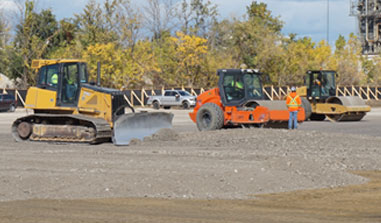
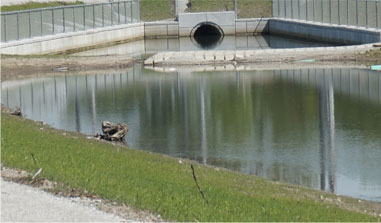
Utility Relocation
Various existing municipal utilities including water lines, sanitary and stormwater systems, are located within the footprint of the Canadian POE. Several of these utilities are obsolete and need to be abandoned. Many more need to be relocated to ensure that service to existing customers is not disrupted. The relocated utilities will be moved to the right-of-way along the PAR and in designated utility corridors throughout the Canadian POE. There will be no interruption of utility services during the relocation.
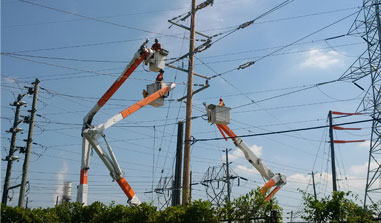
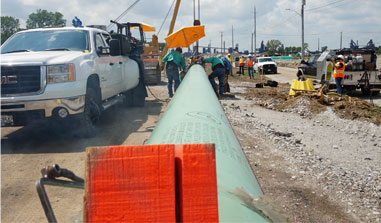
Phase One – Key Activities
Species at Risk Removal
Collection and relocation of species at risk is ongoing. Experts collected hundreds of plants and species from the Canadian POE site. All workers in the project area have received species at risk training in accordance with environmental obligations.
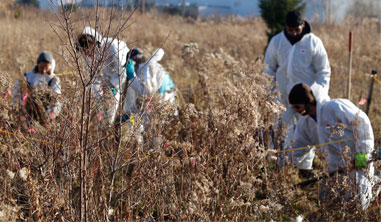
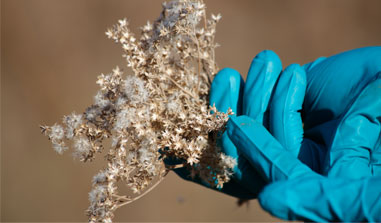
Exclusion Fence
Black geotextile fabric fencing called exclusion fencing has been installed to limit access to the site by species at risk, other wildlife and people. Approximately 4.5 kilometres / 2.8 miles of exclusion fence have been installed around the perimeter of the construction zone. Watch our video.
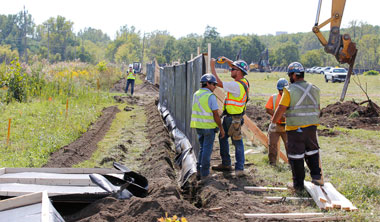
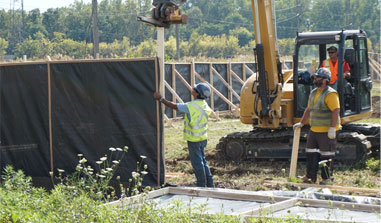
Grubbing and Topsoil Removal
To prepare the site for Early Works construction, the removal of existing vegetation along with stripping of topsoil is needed. Approximately 38,000 m3 / 1.3 million cubic feet of topsoil has been removed from the Canadian site so far. Watch our video.

Wick Drain Installation
Wick drains are man-made drainage paths to allow for faster settling of certain types of soils. They provide greater soil strength in areas where a significant amount of fill will be placed. Once the wick drains were installed to the depth of approximately 20 metres / 65 feet deep, fill was placed to build up the area in preparation for road construction and paving. In total over 42,000 wick drains were installed utilizing 850 kilometres of wick. Watch our video of wick drains being installed.

Drainage Blanket
Wick drains drain into this layer which directs the excess water to the surface drainage system. Approximately 91,000 tonnes of fill was be used for the drainage blanket.
Broadway Drain Reconstruction
The existing Broadway Drain has been reconstructed to accommodate future needs including planning for a rare storm event. The existing drain was widened to over 20 metres / 65 feet in sections once completed. The design allows for a hibernacula – homes/habitat for snakes that may be in the surrounding areas.

Gas Pipeline
Approximately 4.3 kilometres (2.7 miles) of new high-pressure natural gas pipeline has been installed at the Canadian POE.
The pipeline delivers natural gas to two local power generating stations, which use the natural gas to generate electricity for the provincial energy grid. WDBA worked closely with Union Gas Limited, the power generating facilities and the Ontario Provincial Independent Electricity System Operator (IESO) to coordinate the changeover at the power plants to ensure there was no interruption to the energy grid. Watch our video on the installation of the gas pipeline.
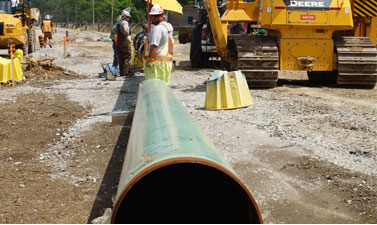
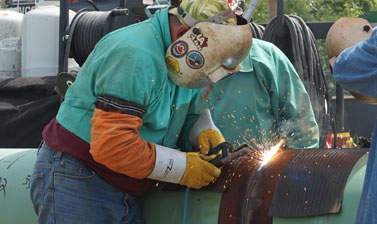
Utility Relocation
Hydro One, in partnership with WDBA, has installed three new transmission towers, which replace three existing structures. Watch a time-lapse of a tower under construction. Watch our time-lapse video.
Pumping Station
A municipal pumping station is located within the footprint of the Canadian POE and must be relocated. Excavation for a new pumping station is underway.
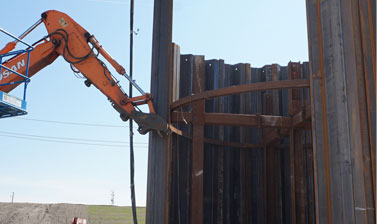
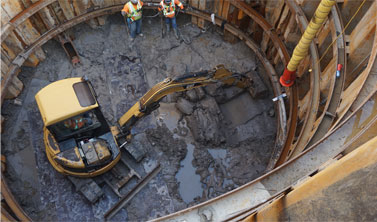
Phase Two – Key Activities
Hydro Transmission and Distribution
The site of the future Canadian POE contains overhead lines that need to be relocated. Phase two of the Preparatory Works includes additional utility relocations with an emphasis on the Hydro One power corridor that connects the International line that crosses the Detroit River to the Keith Transformer Station and beyond that, he province’s power grid. Many of these overhead lines will be moved underground and some connected onto new transmission towers. This work, worth an estimated $86 million includes high voltage cabling and accessories, transmission and distribution line relocation.
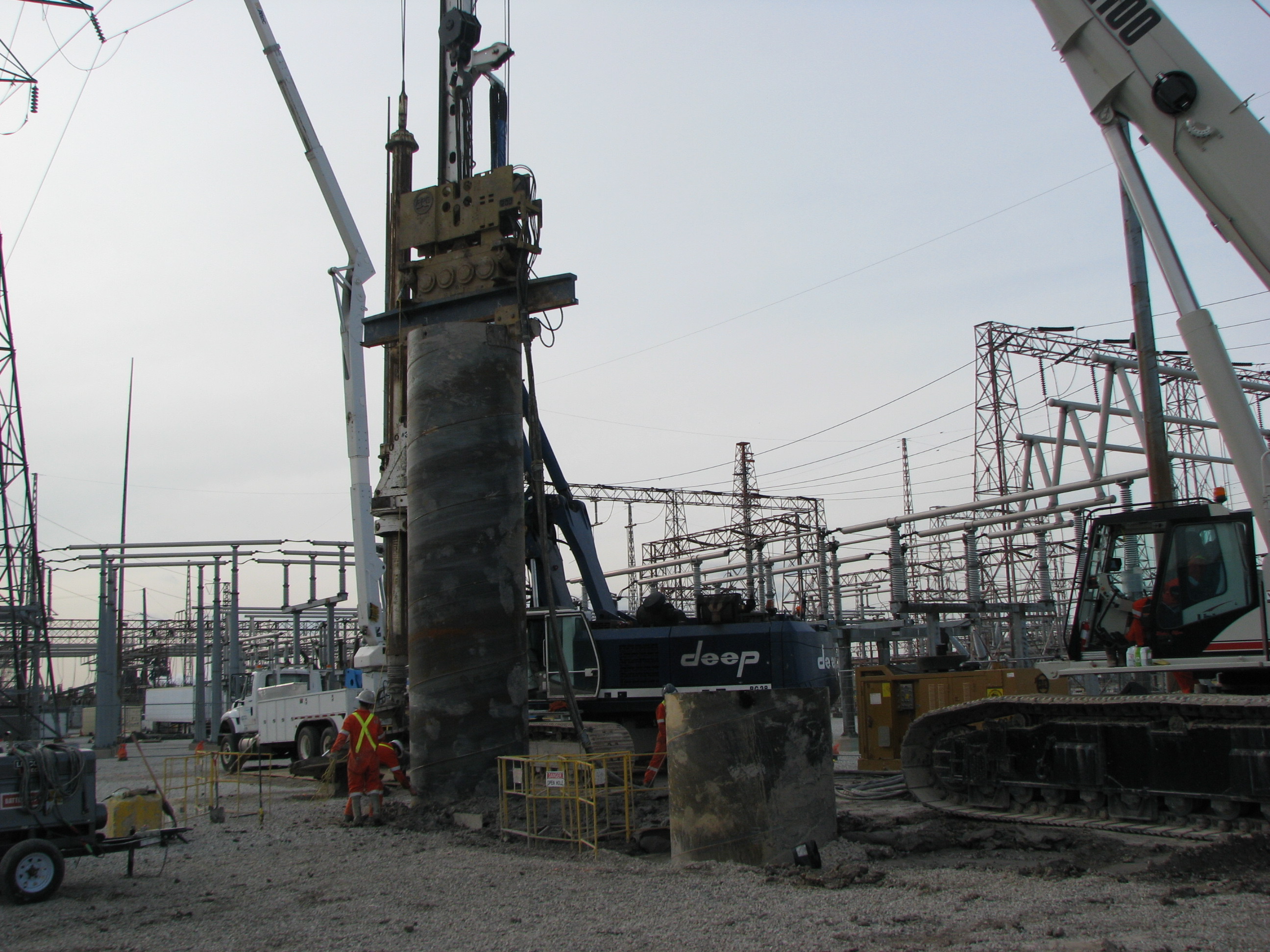
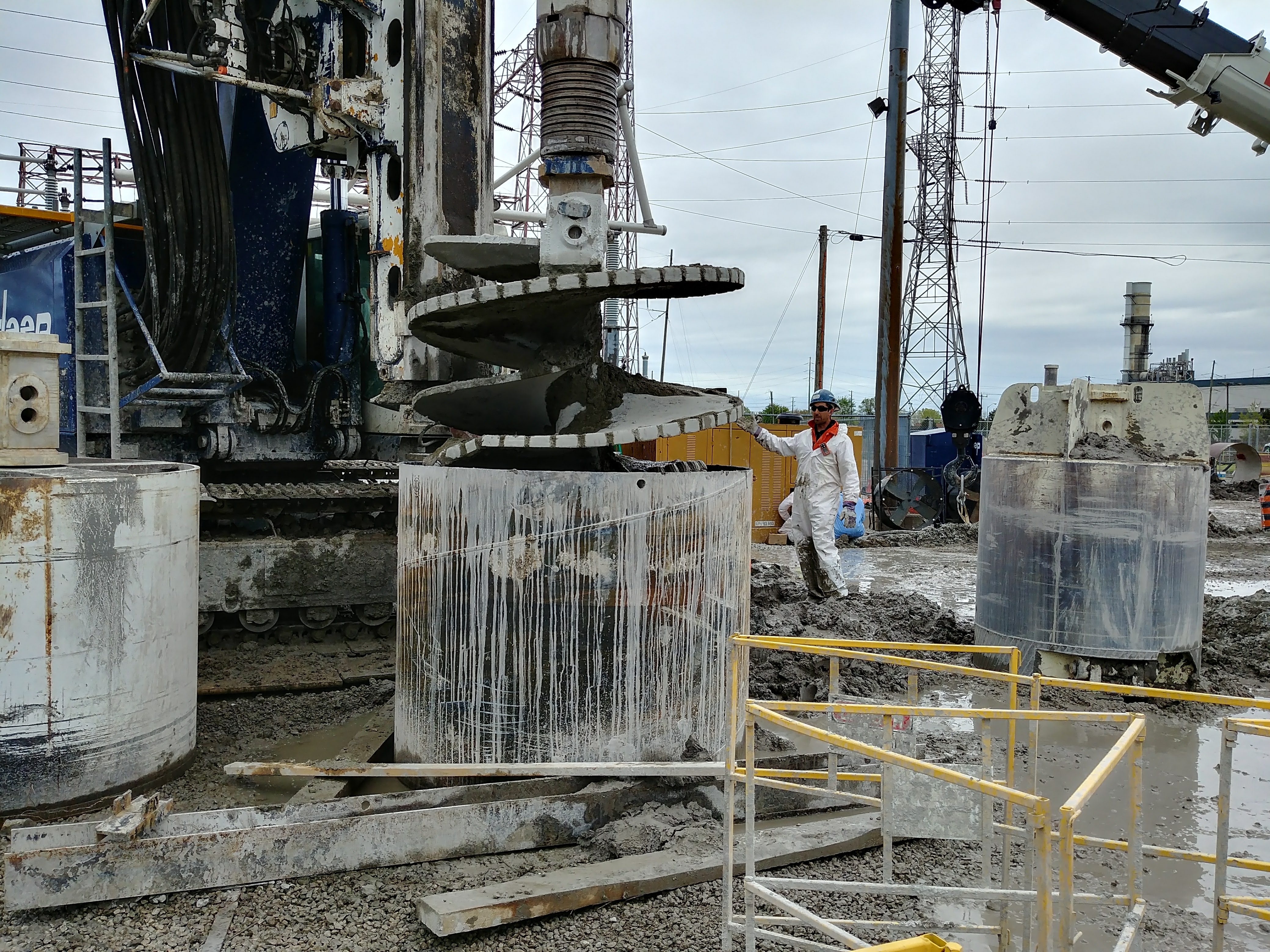
Mitigation Measures
We recognize that construction can be noisy, dusty work. That is why measures are being undertaken to minimize impacts of construction to the surrounding area.
| Potential Effects | Mitigation Measure |
| Additional truck traffic for the hauling of fill and granular materials | Trucks are required to use designated haul routes and are confined to those permitted by the City of Windsor and the Ontario Ministry of Transportation. |
| Possible temporary road closures | Traffic disruptions will be communicated in advance when possible and detours will be clearly marked. |
| Dust | Dust mitigation measures have been implemented including periodic watering, sweeping and the installation of mud mats. |
| Erosion and sediment control | Wick drain construction will include the installation of temporary drainage features to manage surface water quality and quantity. Regular inspection of all erosion and sediment control features are being undertaken and temporary stormwater management ponds are in place to manage water quality. |
| Noise | The use of construction equipment that is in good repair, fitted with functioning mufflers and complies with noise emission standards, as required. |
